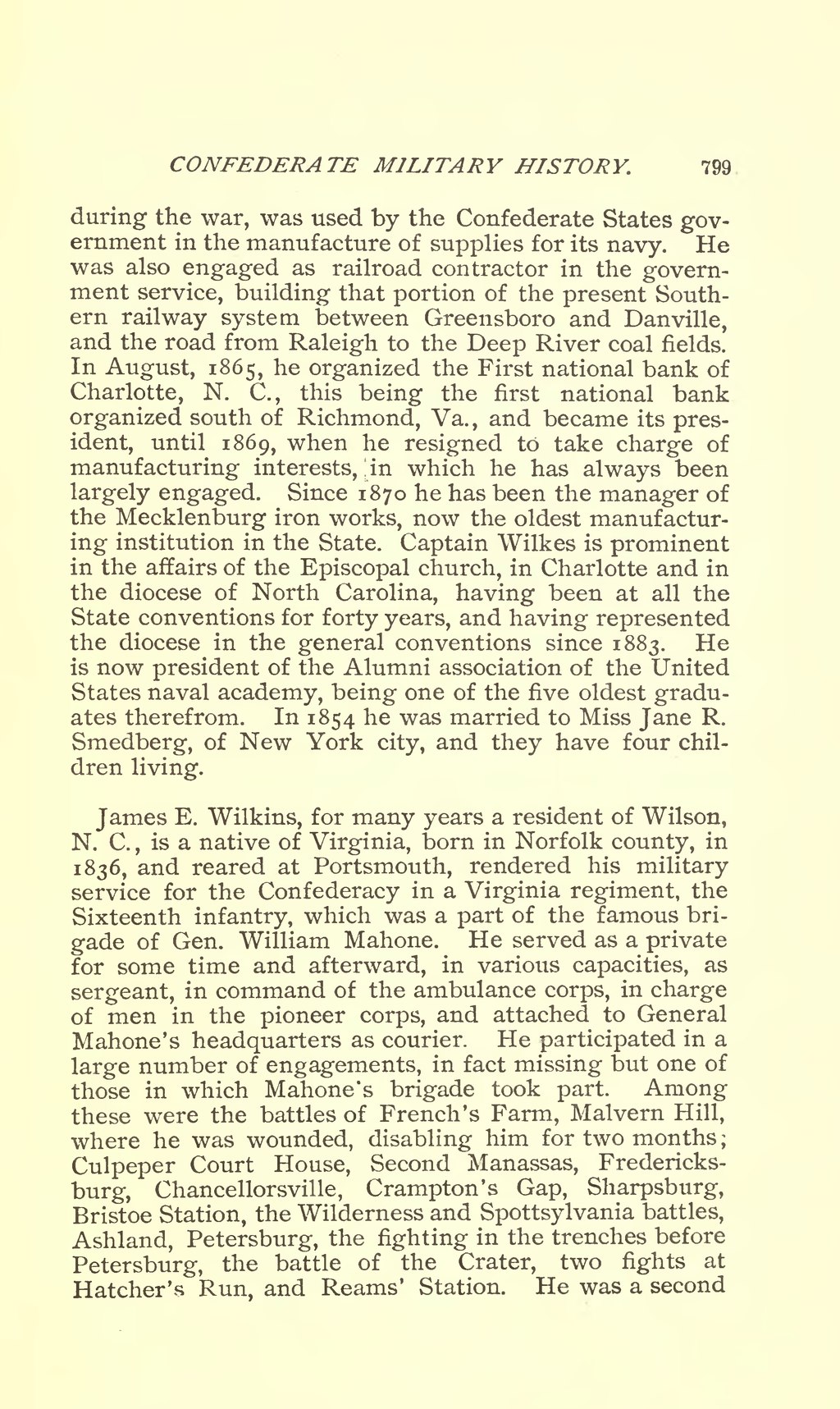during the war, was used by the Confederate States government in the manufacture of supplies for its navy. He was also engaged as railroad contractor in the government service, building that portion of the present Southern railway system between Greensboro and Danville, and the road from Raleigh to the Deep River coal fields.
In August, 1865, he organized the First national bank of Charlotte, N. C., this being the first national bank organized south of Richmond, Va., and became its president, until 1869, when he resigned to take charge of manufacturing interests, [in which he has always been largely engaged. Since 1870 he has been the manager of the Mecklenburg iron works, now the oldest manufacturing institution in the State. Captain Wilkes is prominent in the affairs of the Episcopal church, in Charlotte and in the diocese of North Carolina, having been at all the State conventions for forty years, and having represented the diocese in the general conventions since 1883. He is now president of the Alumni association of the United States naval academy, being one of the five oldest graduates therefrom. In 1854 he was married to Miss Jane R. Smedberg, of New York city, and they have four children living.
James E. Wilkins, for many years a resident of Wilson, N. C., is a native of Virginia, born in Norfolk county, in 1836, and reared at Portsmouth, rendered his military service for the Confederacy in a Virginia regiment, the Sixteenth infantry, which was a part of the famous brigade of Gen. William Mahone. He served as a private for some time and afterward, in various capacities, as sergeant, in command of the ambulance corps, in charge of men in the pioneer corps, and attached to General Mahone’s headquarters as courier. He participated in a large number of engagements, in fact missing but one of those in which Mahone s brigade took part. Among these were the battles of French s Farm, Malvern Hill, where he was wounded, disabling him for two months; Culpeper Court House, Second Manassas, Fredericksburg, Chancellorsville, Crampton’s Gap, Sharpsburg, Bristoe Station, the Wilderness and Spottsylvania battles, Ashland, Petersburg, the fighting in the trenches before Petersburg, the battle of the Crater, two fights at Hatcher’s Run, and Reams Station. He was a second
